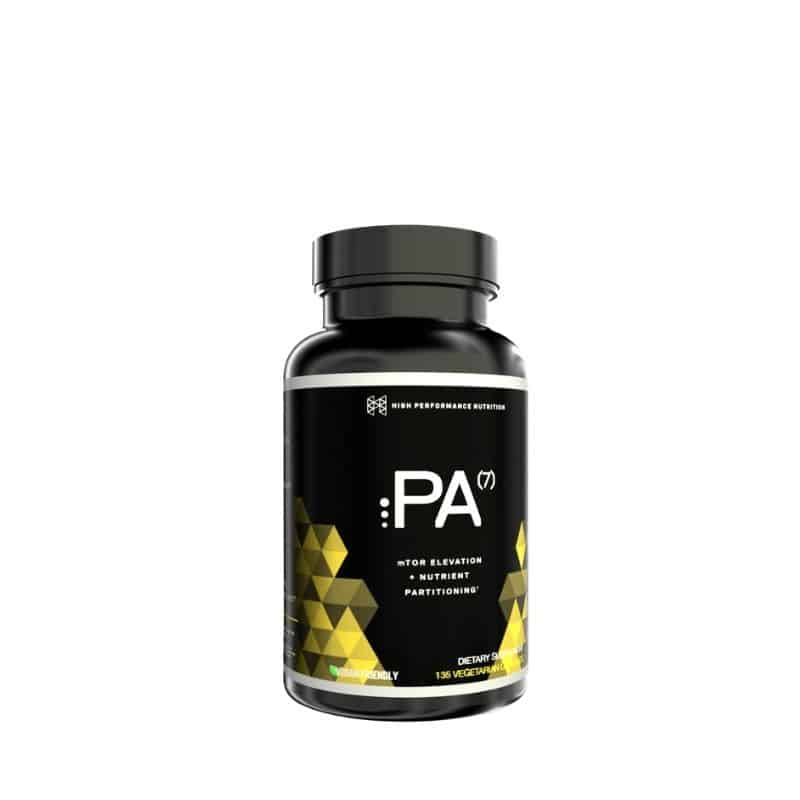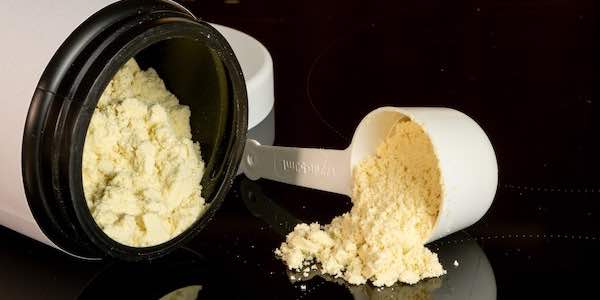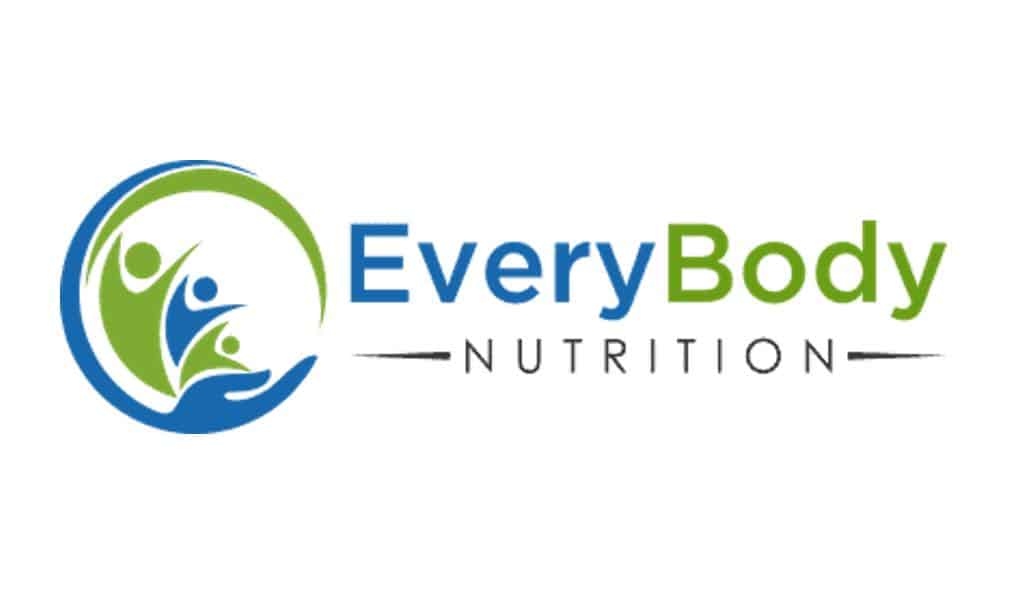Introduction
Unlocking the secrets to muscle growth is a perpetual quest for fitness enthusiasts, and emerging supplements like HPN PA(7) Mediator mTOR Elevation have garnered attention for their potential role in this pursuit. Let’s dive deeper into the latest PA supplements, exploring what they are, how they work, and their impact on muscle growth.
Understanding Phosphatidic Acid
What is Phosphatidic Acid?
Phosphatidic acid (PA) is a phospholipid—a type of fat molecule—that is a crucial component of cell membranes in the human body. It consists of a glycerol backbone, two fatty acid chains, a phosphate group, and a small polar head group. Phospholipids like phosphatidic acid play a fundamental role in maintaining the structural integrity and fluidity of cell membranes. While it naturally occurs in the body, recent research has spotlighted its potential as a supplement for promoting muscle protein synthesis and, consequently, muscle growth.
PA has gained attention among fitness and sports nutrition enthusiasts due to research suggesting its potential role in muscle protein synthesis and muscle growth. Some studies show that PA may activate the mammalian target of rapamycin (mTOR) pathway, a key signaling pathway involved in the regulation of muscle protein synthesis.
Here’s a simplified breakdown of the potential mechanism:
- Resistance Training: When you engage in resistance training (lifting weights), it creates stress on your muscles.
- Phosphatidic Acid Release: This stress may trigger the release of PA within the muscle cells.
- mTOR Activation: Phosphatidic acid, in turn, may activate the mTOR pathway, which is a critical regulator of muscle protein synthesis.
- Muscle Protein Synthesis: Activated mTOR promotes the synthesis of new proteins, including those necessary for muscle growth and repair.
How does Phosphatidic Acid work in the body?
PA’s mechanism of action revolves around its ability to activate the mammalian target of rapamycin (mTOR) pathway, a key regulator of cell growth and protein synthesis. By doing so, it plays a vital role in signaling the body to build muscle, making it a favorite supplement for those aiming to maximize their gains.
Benefits and Effects of Phosphatidic Acid Supplements
Research on the benefits and effects of PA supplements is ongoing, and here are some of the potential benefits and effects associated with phosphatidic acid supplementation:
- Muscle Protein Synthesis (MPS): One of the primary areas of interest is the potential to enhance muscle protein synthesis. By activating the mammalian target of rapamycin (mTOR) pathway, PA may play a role in promoting the creation of new proteins, which is essential for muscle growth and repair.
- Muscle Strength and Size: Some studies have reported that supplementation, when combined with resistance training, may lead to increases in muscle strength and size compared to a placebo. This suggests a potential benefit for individuals looking to enhance their resistance training outcomes.
- Exercise Performance: There is evidence suggesting that supplementation might improve exercise performance. This could be attributed to its potential role in enhancing muscle function and adaptation to training.
- Body Composition: Some studies have explored the impact on body composition, particularly in terms of reducing body fat and increasing lean body mass. However, more research is needed to establish clear and consistent effects in this regard.
- Hormonal Responses: PA may influence hormonal responses associated with muscle growth. Some research has suggested changes in hormones such as insulin-like growth factor 1 (IGF-1) and cortisol, which play roles in muscle metabolism.
What does Phosphatidic Acid do for the body?
The primary benefit of PA supplements like PA7 lies in their potential to enhance muscle protein synthesis. This process is fundamental for muscle growth, repair, and recovery. Additionally, PA has been associated with increased strength, making it a valuable addition to the arsenal of fitness enthusiasts.

mTOR and Phosphatidic Acid
How PA acts as a mediator in muscle protein synthesis
The mTOR pathway is a central player in muscle protein synthesis, and PA’s role as a mediator in activating mTOR makes it a compelling supplement. Let’s explore this interaction with mTOR and the molecular mechanisms that drive muscle growth.
PA is believed to act as a mediator in muscle protein synthesis (MPS) by influencing the mammalian target of rapamycin (mTOR) signaling pathway, which plays a central role in the regulation of protein synthesis and cell growth in response to various stimuli, including resistance exercise.
Here’s a simplified overview of how PA may function as a mediator in muscle protein synthesis:
- Activation of mTOR Pathway: Resistance exercise, such as weightlifting, induces mechanical stress on muscle fibers. This stress triggers a signaling cascade, including the activation of the mTOR pathway.
- Phosphatidic Acid Release: The stress generated during resistance exercise is thought to stimulate release within the muscle cells.
- Interaction with mTOR Complex 1 (mTORC1): PA has been proposed to directly interact with and activate mTORC1, a complex of proteins that includes mTOR. mTORC1 is a key regulator of protein synthesis, controlling the initiation of translation and the assembly of the protein synthesis machinery.
- Enhancement of Translation Initiation: Activated mTORC1, influenced by PA, promotes the phosphorylation of downstream targets, such as S6 kinase (S6K) and eukaryotic initiation factor 4E-binding protein (4E-BP1). These phosphorylation events enhance the initiation of translation, allowing the cell to produce new proteins, including those involved in muscle protein synthesis.
- Protein Synthesis and Muscle Growth: The enhanced translation initiation and synthesis of new proteins contribute to muscle protein synthesis, leading to muscle growth and repair.
Exploring PA Supplements
PA7 Supplement: An in-depth look
PA7, a specific form of Phosphatidic Acid supplement due to its trademarked version (Mediator), has gained popularity for its purported effectiveness in promoting muscle growth. We’ll take a closer look at what sets PA7 from HPN apart, exploring its formulation and benefits.
What to consider when choosing a Phosphatidic Acid supplement
Not all PA supplements are created equal. We’ll provide insights into key factors to consider when selecting a supplement, including ingredient transparency, dosage, and potential synergies with other compounds.
When choosing a phosphatidic acid (PA) supplement, there are several factors to consider to ensure you make an informed decision. Here are some key considerations:
- Purity and Quality:
- Look for a product from a reputable manufacturer that follows good manufacturing practices (GMP).
- Check for third-party testing or certifications that verify the purity and quality of the supplement.
- Ingredient Transparency:
- Ensure the product label provides clear information about the ingredients, including the amount of phosphatidic acid per serving.
- Dosage and Concentration:
- Consider the dosage of phosphatidic acid per serving. The optimal dosage can vary, and it’s essential to choose a supplement that aligns with the dosages used in relevant research studies.
- Form of Phosphatidic Acid:
- PA supplements like HPN PA7 are available in different forms, such as derived from soy lecithin. Consider your dietary preferences and potential allergens when choosing a particular form.
- Additional Ingredients:
- Check for any additional ingredients in the supplement. Some products may contain additives, fillers, or preservatives. Choose a supplement with minimal and clean additional ingredients.
- Effectiveness and Research:
- Look for products that have been studied in clinical trials or have research supporting their efficacy. Consider the overall body of evidence and the quality of the studies.
- Brand Reputation:
- Choose a supplement from a reputable and well-established brand. Check customer reviews and testimonials to gauge the experiences of other users.
- Allergen Information:
- If you have allergies or dietary restrictions, check the allergen information on the product label. Some phosphatidic acid supplements may be derived from soy, so be aware of this if you have a soy allergy.
- Bioavailability:
- Consider the bioavailability of the supplement. Some formulations may enhance the absorption of phosphatidic acid, potentially improving its effectiveness.
- Cost:
- Compare prices across different brands, but don’t compromise quality for a lower cost. It’s important to invest in a high-quality supplement from a trustworthy source.
Getting Started with Phosphatidic Acid
How to start taking Phosphatidic Acid supplements
For those new to Phosphatidic Acid supplementation, understanding how to incorporate it into your routine is essential. We’ll provide practical guidance on how to start taking Phosphatidic Acid supplements, including recommended dosages and timing.

Before starting to take phosphatidic acid (PA) supplements, it’s essential to approach supplementation with caution and consider several factors to ensure it aligns with your individual needs and health goals. Here’s a step-by-step guide on how to start taking phosphatidic acid supplements:
- Choose a High-Quality Supplement:
- Select a phosphatidic acid supplement from a reputable and well-established brand. Consider factors such as purity, quality, dosage, and additional ingredients. Look for products that have undergone third-party testing.
- Follow Recommended Dosage:
- Adhere to the recommended dosage on the product label. Dosages used in research studies may vary, so choose a supplement that provides a dosage consistent with relevant scientific findings.
- Consider Timing:
- Some supplements may have specific recommendations for timing, such as taking them with meals or at a particular time of day. Follow the manufacturer’s instructions for the best results.
- Monitor for Side Effects:
- Pay attention to how your body responds to the supplement. While phosphatidic acid is generally considered safe, individuals may react differently. If you experience any adverse effects, discontinue use and consult with a healthcare professional.
- Pair with Resistance Training:
- If your goal is to enhance muscle growth and strength, consider incorporating phosphatidic acid supplementation with a resistance training program. Many studies investigating the effects of PA on muscle protein synthesis have used resistance exercise in combination with supplementation.
- Be Patient:
- Results from supplementation, especially in terms of muscle growth, may take time. Be patient and consistent with both your supplement regimen and your overall fitness routine.
- Evaluate Results and Adjust:
- Assess your progress over time. If you’re not experiencing the desired outcomes or if you have concerns, consider adjusting your supplement regimen. It’s also advisable to stay informed about new research findings on phosphatidic acid.
- Holistic Approach:
- Remember that supplements should complement, not replace, a well-balanced diet and a consistent exercise program. Focus on maintaining a healthy lifestyle that includes proper nutrition, regular physical activity, and adequate rest.
Should beginners take Phosphatidic Acid supplements?
We’ll address common questions about whether beginners should dive into Phosphatidic Acid supplementation, considering factors such as fitness level, goals, and overall health.
Here are some considerations for beginners considering phosphatidic acid supplementation:
- Muscle Growth and Strength Potential:
- Studies suggest that phosphatidic acid may play a role in activating the mTOR pathway, a key regulator of muscle protein synthesis. This could contribute to muscle growth and strength gains, making it an exciting supplement for those looking to maximize their resistance training efforts.
- Synergy with Exercise:
- PA has been studied in conjunction with resistance training, and there is evidence suggesting a synergistic effect. If you’re already engaged in or planning to start resistance training, the potential benefits of PA supplementation could complement your exercise routine.
- Start with Recommended Dosage:
- Begin with the recommended dosage as indicated on the product label. By following the recommended guidelines, you set the stage for a positive experience with the supplement.
- Combine with Healthy Lifestyle:
- Keep a positive mindset about your fitness journey and the potential role of phosphatidic acid in your progress. Believe in the power of consistency, both with your supplement regimen and your overall health habits.
Best practices and dosage guidelines for beginners
Dosage plays a crucial role in the effectiveness of Phosphatidic Acid supplements. We’ll offer best practices and dosage guidelines tailored for beginners, ensuring a safe and optimal introduction to this intriguing supplement.
- Choose a Reputable Product:
- Select a high-quality phosphatidic acid supplement from a reputable manufacturer. Look for products that undergo third-party testing to ensure purity and quality.
- Dosage Guidelines:
- Follow the recommended dosage guidelines provided by the product manufacturer. Dosages used in research studies have varied, but a common range is around 750 mg to 1,500 mg per day. Start with the lower end of the range and assess your response before considering higher doses.
- Timing of Consumption:
- Consider the timing of your phosphatidic acid supplementation. Some individuals prefer taking it with meals, while others may choose to take it around the time of their workouts. Follow the product instructions for the best results.
- Consistency is Key:
- Take the supplement consistently as part of your daily routine. Consistency is crucial for assessing the long-term effects and potential benefits.
- Combine with Resistance Training:
- If your goal is to enhance muscle growth and strength, consider combining phosphatidic acid supplementation with a structured resistance training program. Many studies investigating the effects of PA on muscle protein synthesis have used resistance exercise in combination with supplementation.
- Give It Time:
- Results from supplementation, especially in terms of muscle growth and strength gains, may take time. Be patient and give the supplement sufficient time to exert its potential effects.
- Evaluate Progress:
- Regularly assess your progress in terms of fitness goals and overall well-being. Adjust your supplement regimen or other aspects of your routine based on your individual experiences and outcomes.
Considerations for combining Phosphatidic Acid with other supplements
Understanding how Phosphatidic Acid interacts with other supplements can enhance its effectiveness. We’ll explore considerations for combining Phosphatidic Acid with other common fitness supplements to maximize your results.

- Pre-Workout Combo:
- Consider combining phosphatidic acid with a pre-workout supplement containing ingredients like caffeine, beta-alanine, and citrulline malate. This combination may enhance energy levels, focus, and blood flow during your workouts.
- Post-Workout Protein Boost:
- Pair phosphatidic acid with a post-workout protein source, such as a protein shake or a meal rich in protein. This combination may support muscle protein synthesis and recovery after resistance training.
- Joint Health Support:
- Combine phosphatidic acid with supplements known for joint health, such as collagen and hylauronic acid. This combination might be beneficial, especially if you engage in intense physical activity that places stress on the joints.
- Immune Support Combo:
- Consider combining phosphatidic acid with immune-supportive supplements, such as vitamin C, vitamin D, and zinc. This combination can help maintain overall health, especially during periods of intense training.
- Omega-3 Fatty Acids Integration:
- Combine phosphatidic acid with omega-3 fatty acids, either through fish oil supplements or dietary sources like fatty fish. This combination may have synergistic effects on overall health and inflammation.
- Adaptogen Addition:
- Consider adding adaptogenic herbs like ashwagandha (KSM-66) or rhodiola to your supplement stack along with phosphatidic acid. These herbs may help the body adapt to stress and support overall well-being.
- Electrolyte Enhancement:
- If you engage in prolonged or intense exercise, combine phosphatidic acid with electrolyte supplements to support hydration and maintain proper fluid balance.
- Blood Flow Optimization:
- Pair phosphatidic acid with supplements that support blood flow, such as nitric oxide boosters like beetroot extract. This combination may enhance nutrient delivery to muscles during exercise.
- Cognitive Function Support:
- Combine phosphatidic acid with supplements known for cognitive support, such as omega-3 fatty acids, acetyl-L-carnitine, or other nootropics. This combination may benefit both physical and cognitive performance.
Conclusion
In conclusion, Phosphatidic Acid supplements present a promising avenue for amplifying your muscle growth potential. From understanding the molecular intricacies to exploring specific supplements like PA7, this guide serves as a comprehensive resource for harnessing the power of Phosphatidic Acid in their fitness journey.
Frequently Asked Questions (FAQs)
What is Phosphatidic Acid, and how does it differ from other muscle-building supplements?
Phosphatidic Acid is a phospholipid that plays a crucial role in activating the mTOR pathway, promoting muscle protein synthesis. Unlike some traditional muscle-building supplements, PA targets specific cellular mechanisms to enhance muscle growth as long as protein intake is sufficient
How does Phosphatidic Acid work in the body to promote muscle growth?
Phosphatidic Acid works by activating the mTOR pathway, a central regulator of cell growth and protein synthesis. This activation signals the body to increase muscle protein synthesis, leading to enhanced muscle growth, repair, and recovery with ample protein consumption
What are the potential benefits of Phosphatidic Acid supplements for fitness enthusiasts over 40?
Phosphatidic Acid supplements may offer benefits such as increased muscle protein synthesis, improved strength, and enhanced muscle recovery while ensuring protein macros are hit. These factors can be particularly valuable for individuals over 40 aiming to maintain or build muscle mass.
What is HPN PA7, and how does it differ from other Phosphatidic Acid supplements?
PA7 is a specific form of Phosphatidic Acid supplement (Mediator), that has gained attention for its purported effectiveness. It is essential to note that the specific formulation, dosage, and additional ingredients may vary between Phosphatidic Acid supplements, including PA7.
Are there any potential side effects or risks associated with Phosphatidic Acid supplements?
Generally, Phosphatidic Acid supplements are considered safe when taken within recommended dosages. However, individual responses may vary. It’s advisable to consult with a healthcare professional before incorporating any new supplement into your routine, especially if you have pre-existing health conditions.
Can beginners benefit from Phosphatidic Acid supplements, or should they be reserved for more advanced fitness enthusiasts?
Beginners can potentially benefit from Phosphatidic Acid supplements, especially if their goals include muscle growth and improved strength. However, consider consulting with a fitness or healthcare professional beforehand.
How should I choose a Phosphatidic Acid supplement, and what factors should I consider?
When choosing a Phosphatidic Acid supplement, factors such as ingredient transparency, dosage, and the specific form of Phosphatidic Acid (such as HPN PA7) should be considered. It’s essential to select a high-quality supplement from reputable sources.
What is the recommended dosage of Phosphatidic Acid for beginners, and how should it be incorporated into a fitness routine?
The timing of supplementation, such as whether it’s taken with meals or around workouts, can impact its effectiveness. Consulting with a healthcare or fitness professional can provide personalized guidance.
Can Phosphatidic Acid supplements be combined with other fitness supplements, and are there potential synergies or conflicts?
Phosphatidic Acid supplements can be combined with other fitness supplements, but it’s essential to consider potential interactions. Factors such as the goals of supplementation, individual needs, and the specific formulations of each supplement should be taken into account.
Is Phosphatidic Acid supplementation suitable for individuals with specific health conditions, and are there any contraindications?
Individuals with specific health conditions or those taking medications should consult with a healthcare professional before incorporating Phosphatidic Acid supplements. While generally considered safe, it’s crucial to ensure compatibility with individual health circumstances.








